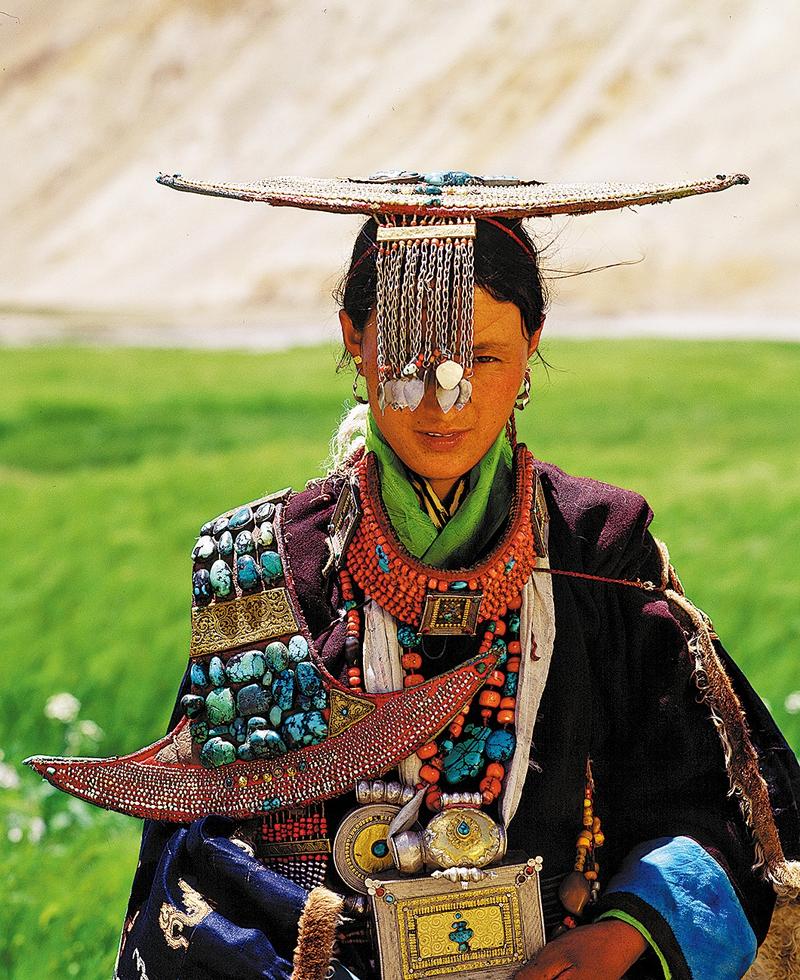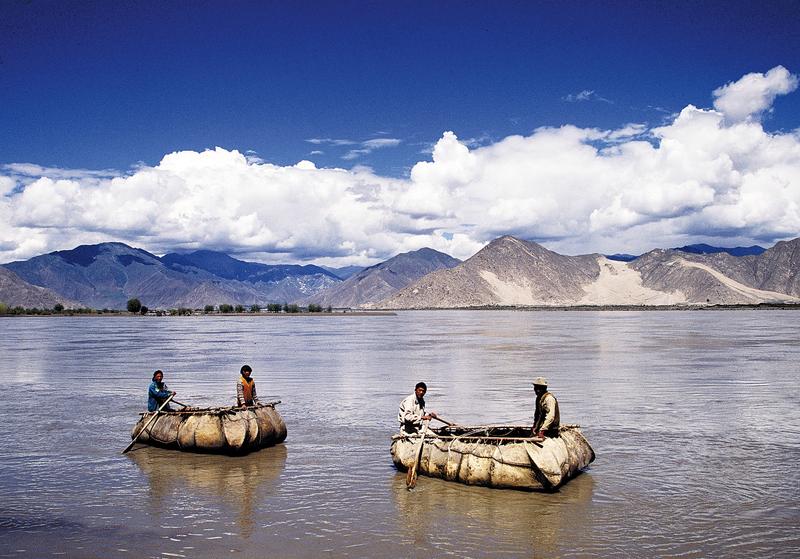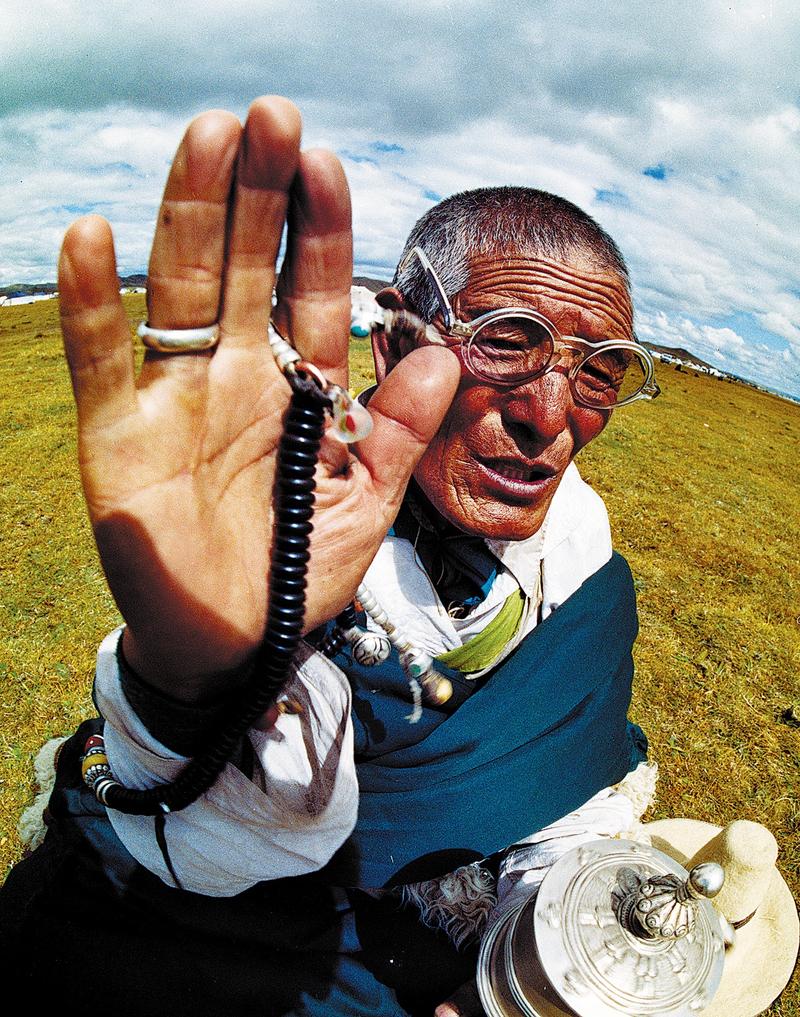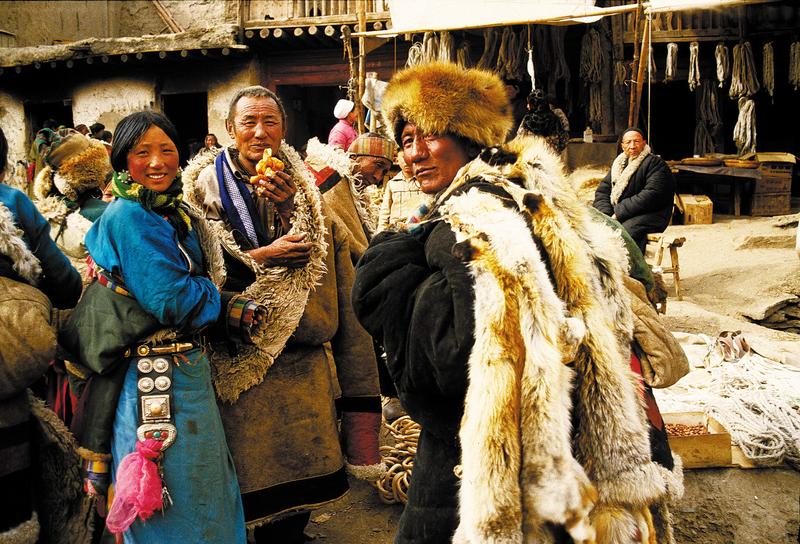Photographer of the majestic Qinghai-Tibet Plateau frames its vivid landscape and brings it to life, Yang Feiyue reports.
 The snowcapped Himalayas loom above a lake in a view captured by photographer Zhang Chaoyin who has been committed to showing the natural charm of the Qinghai-Tibet Plateau for more than three decades. (PHOTO PROVIDED TO CHINA DAILY)
The snowcapped Himalayas loom above a lake in a view captured by photographer Zhang Chaoyin who has been committed to showing the natural charm of the Qinghai-Tibet Plateau for more than three decades. (PHOTO PROVIDED TO CHINA DAILY)
If you unroll a map of the Qinghai-Tibet Plateau and point Zhang Chaoyin to any spot, he can, without fail, tell you a story about it.
Over the past three decades, Zhang, now in his 60s, has traveled practically every nook and cranny of that pristine land, furnished with stunning mountains, lucid rivers, arid deserts and imposing glaciers, all of which he deems to be "magnificent".
A few glaciers or glacial landscapes have diminished, or actually vanished, over this period of time, and I was fortunate to witness them and present them in the album.
Zhang Chaoyin, photographer
He has also applied his expertise in photography to capture more than 100,000 photos and produce rich, firsthand travelogues that show the plateau's beauty from ingenious perspectives.
In a recent public lecture series Masters Talk, hosted by Chinese National Geography magazine, Zhang shared the highlights of his remarkable journey to a packed audience of more than 42,000.
Ever since his first photography trip in 1985 to the Hoh Xil depopulated zone on the plateau, Zhang has been enamored by the stunning natural landscape.
The complex geographical conditions of frozen earth, glaciers, snowcapped mountains and pebble paths all intertwined in the region, making driving difficult yet thrilling.
"The natural environment was grim, completely free from human interference, but it sort of tugged at your heartstrings because you saw everything purely complying with the rules of nature," says Zhang, who was born in Lanzhou, Gansu province.
He witnessed the steamy collision of heat emanating from mass hot springs against the freezing cold air on mountain peaks that are 5,200 meters above sea level.
 Folk customs are a highlight on the plateau and have been one of Zhang's priorities. (PHOTO PROVIDED TO CHINA DAILY)
Folk customs are a highlight on the plateau and have been one of Zhang's priorities. (PHOTO PROVIDED TO CHINA DAILY)
As he ascended the glaciers, he came across huge green jade stones that took his breath away.
"It felt like I hit the jackpot, and I couldn't help but point my lens at it," he says.
The large herds of wild yaks, and wolves hungrily chasing after Tibetan antelopes, are also etched into Zhang's mind.
He has made more than 60 visits over the years to the plateau that covers the Tibet autonomous region, Qinghai, Gansu, Sichuan and Yunnan provinces, as well as India, Nepal and Bhutan.
During those trips, Zhang has taken a wealth of pictures capturing thrilling elements of the plateau's nature, history, religion, culture, art and folk customs. All this enables the public to appreciate its charm.
"As a professional photographer who is engaged in visual creation, I consider the Qinghai-Tibet Plateau a holy land — one of dreams," Zhang says.
"I am deeply fascinated by the magical light and color that are in constant change, brought about by the fickle weather conditions, and it renders my photos with a mystical touch."
When he was photographing murals in Ngari prefecture, Tibet, the indoor lighting was very dim and there was no direct light source. He had to improvise.
"I used a car reflector to project the outdoor light into the room, and then projected the indoor light onto the murals," he recalls. "The resulting images under the two projected light sources were softer and had no light reflection. By opening the camera aperture to the maximum, the murals were captured clearly."
 Folk customs are a highlight on the plateau and have been one of Zhang's priorities. (PHOTO PROVIDED TO CHINA DAILY)
Folk customs are a highlight on the plateau and have been one of Zhang's priorities. (PHOTO PROVIDED TO CHINA DAILY)
One of Zhang's most unforgettable experiences was his odyssey to photograph Lake Namtso with a few of his friends in 1986, his second visit to Tibet.
"We were lucky to witness the unique geographical wonder of the Namtso glaciers," Zhang says.
The lake surface was frozen into a thick layer of ice during the winter months, and began to melt around May.
"The melting ice chunks were pushed toward the shore by the tide, gradually forming ice mountains that stand several meters high," he recalls.
At the moment they were tempted to climb onto one of the edifices to capture the stunning view from a different perspective, the ice suddenly made a loud cracking sound. "Without warning, some of the ice beneath us gave way and collapsed into the lake below," he says.
After Zhang came back to his senses, he realized the fracture zone was just a few meters behind him. "It was a really close call," he says.
When they finished the photo shoot, the car that was supposed to pick them up didn't show up as scheduled. "Mobile phones were not available then, and we ran out of food supplies," he says.
Fortunately, they met local Tibetans who turned out to be good Samaritans. "They generously shared with us their dried meat and tsamba (flour made from parched ground barley or wheat)," he says.
It was the local people's good-heartedness that helped Zhang and his friends survive the week until their car eventually came.
Zhang became fascinated by photography during his music studies at Minzu University of China in the early 1980s.
 Folk customs are a highlight on the plateau and have been one of Zhang's priorities. (PHOTO PROVIDED TO CHINA DAILY)
Folk customs are a highlight on the plateau and have been one of Zhang's priorities. (PHOTO PROVIDED TO CHINA DAILY)
He often went to different places with his classmates to perform, and that was when he met Sun Chengyi, a fellow student who invited him on a two-week tour in Shandong province. "He had a Nikon camera that was really impressive, and more so were the photos he took with it," Zhang says.
The spark of Zhang's enthusiasm toward photography had caught aflame.
After his graduation in 1983, Zhang got a job with the art division of Gansu's ethnic affairs committee. The position exposed him to a rich ethnic culture in neighboring provinces such as Qinghai, Sichuan, and the Tibet autonomous region. He founded the Gansu Folk Custom magazine later that year.
He continued honing his skills and, in 1997, he pursued a postgraduate visual art (photography) program at the Central Academy of Fine Arts in Beijing. He spent two years studying photography optics, photography chemistry, photo-sensitivity measurement, digital imaging and color science.
He also acquired the professional photography techniques required for capturing still life images, portraits, food, architecture, landscapes, among others.
In 1999, Zhang was transferred to the Nationality Pictorial (Minzu Huabao) in Beijing, where he got down to work focusing on specific areas of photographic expression.
Earlier work experience predisposed him to aiming the lens at the Qinghai-Tibet Plateau.
"The massive and majestic landscape, and numerous miracles of civilization were all deeply attractive to me," he says.
In the middle of last year, Zhang published an album of photos, Himalayas.
He selected more than 3,000 pictures from his numerous trips into and around the Qinghai-Tibet Plateau for the album, which covers geographical and environmental features, history, literature and art, religions and faith, and folk customs of the plateau.
 Folk customs are a highlight on the plateau and have been one of Zhang's priorities. (PHOTO PROVIDED TO CHINA DAILY)
Folk customs are a highlight on the plateau and have been one of Zhang's priorities. (PHOTO PROVIDED TO CHINA DAILY)
For example, he devoted a chapter to sculptures, in which he presented images of gold and bronze statues from Tibet and central regions, and India and Nepal, as well as clay sculptures and stone carvings.
There are also chapters on murals from famous monasteries and grottoes, and on thangka art that is unique to Tibet.
"For each of the six parts, I invited a specialist to write an essay on the subject, which adds an academic touch to the book," he says.
As he often returns to the same places where he has taken particular pictures during the past three decades or more, he has managed to record the changes of those places over that time, some due to climate change, like the retreat of a number of glaciers.
"A few glaciers or glacial landscapes have diminished, or actually vanished, over this period of time, and I was fortunate to witness them and present them in the album," he says.
Chinese scholars have described the book as "an encyclopedia of Tibet" because of its rich content.
"I feel like this book is like a university he built," says Wang Bing, professor from Central Academy of Fine Arts.
Wang did printmaking for the album.
"It contains his time in, and his images of, Tibet. It's like a version of The Arabian Nights, and he did it," Wang says.
Zhang has been modest, saying he is not resourceful enough to present an encyclopedia, but he does believe his work will help shed light on the plateau's charm.
"Early on, I approached photography in a rather superficial manner, solely seeking out beauty. However, as I began to take on specific shooting assignments, I came to realize that it wasn't about the quantity or grandeur of photos, but rather about figuring out what to shoot, how to 'manage' the subject being photographed, and whether I could offer a unique perspective on the world," Zhang says.
 Zhang Chaoyin, photographer. (PHOTO PROVIDED TO CHINA DAILY)
Zhang Chaoyin, photographer. (PHOTO PROVIDED TO CHINA DAILY)
During the actual process, Zhang's approach was to first analyze the subject matter from the perspective of cultural studies and its connotations, in order to maximize the informational value of the resulting photos. "This approach significantly improved my efficiency," he says.
For example, when photographing at a temple, he says that he usually would only have a brief period of time, like half an hour or so, to capture the essence of the building's architectural features, structure and exhibits.
This required him to develop a discerning eye.
"I would take into account the subjects' date, literary and artistic value, as well as their aesthetic appeal," he says.
Although the extreme climate, daunting altitude, complex geography, and unknown dangers made each of his trips to the plateau more like a battle, the breathtaking sceneries captured through his lens were exhilarating and made everything worth it.
Despite the fact that Zhang has repeatedly promised his family that he would never return to Tibet to take pictures again, he couldn't help but break his promises over and again.
To this day, he still cannot put a definitive end to his journey.
Looking back over the past decades, Zhang says he feels fortunate and content to have seen landscapes that most people will not, to have ventured to places that many people would not dare to and to have touched things that others have not.
"I will strive to spread Himalayan culture and to make a lasting impact in my field. This is my life's mission, and one that will never fade," he says.
Contact the writer at yangfeiyue@chinadaily.com.cn



